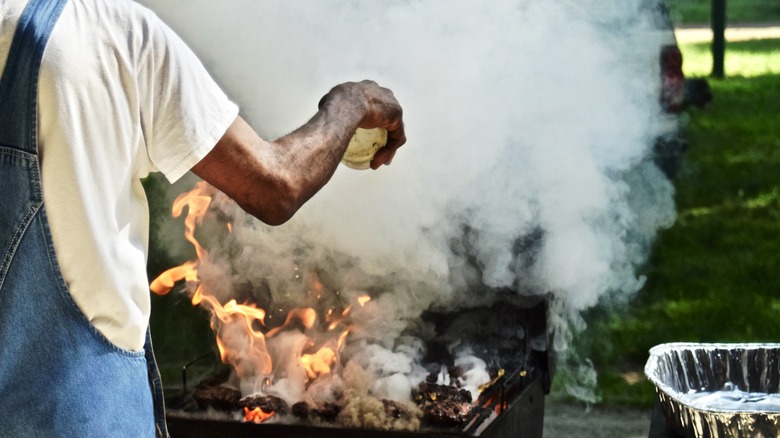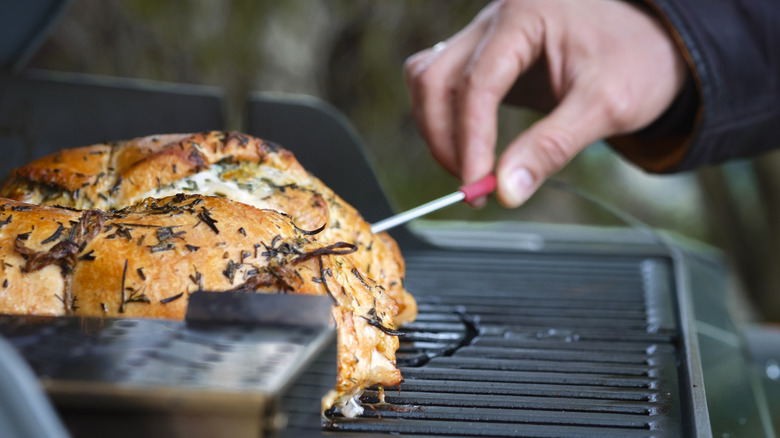Why You Shouldn't Rely Only On Cook Times When Using A Smoker
Smoking food is an ancient technique that can be traced to humanity's earliest days. In the millennia before refrigeration was available, meat needed to be preserved so that it remained safe to eat over several days and weeks (via Michigan State University). One of the most effective ways to do that was to dry it out. Per Washington State University, dehydration stops bacteria or fungi from taking hold and spoiling the meat. However, using smoke to help the drying process adds flavor, deters flies from landing on the meat, and creates a thin acidic layer on the outside of the meat (via American Made Grills).
Nowadays, moisture is still the foremost concern for those of us who love the scent of smoke and meats, but in the opposite direction. Rather than viewing moisture as the enemy, BBQ pitmasters pride themselves on their cuts emerging from the smoke both juicy and tender (via BBQ Champs Academy). However, cooks are also responsible for making sure their food is cooked to a safe temperature — undercooked meat can result in illness (via Michigan State University).
Taking part in an art as ancient as smoking means being able to draw on the experience of those who came before when striking this balance. However, recipes tend to advise cooking times based on the weight of the meat to be cooked (via Chest of Books). This is the simplest way to write recipes but ignores several important factors.
Look beyond cook times
The determining factor between undercooked, overcooked, or perfectly smoked meat, is the temperature at its center (via Amazing Ribs). If the middle of the thickest part is at a safe temp, then the rest will also be safe. A long, thin piece of meat will cook quicker than a thick lump that weighs the same — the middle of the thin piece will heat up faster (via Smoked BBQ Source). Adhering strictly to cook times in those cases can lead to unsafe or dried-out meat.
Another keystone in the tenderness of low-and-slow smoked meats is collagen, the protein that makes up connective tissue (via Harvard School of Public Health). Per Science of Cooking, connective tissues begin to break down into gooey gelatin between 160 and 200°Fahrenheit, but at temperatures this high, the meat will also be slowly dehydrating. Simply relying on cook time can see thinner parts of your meat dry out while the thicker ends stay tough and chewy.
It's great to educate yourself about the science behind your smoker. However, as Almanac advised, the best way to be certain of serving up safe and succulent smoked sustenance is to take the guesswork out of it and use a meat thermometer. As well as giving you peace of mind when smoking, meat thermometers have many other kitchen applications — from roasting Thanksgiving turkeys to grilling perfect steaks, accurate data beats well-meaning rules of thumb every time.

